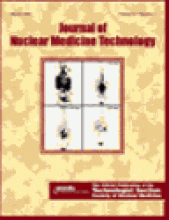
Last October I attended the fourth Gateway meeting. Gateway meetings are called by the president of the SNM Technologists Section to address a specific issue that has a major bearing on the practice of nuclear medicine technology. This year attendees were asked to brainstorm on how to improve research opportunities for technologists and how to motivate technologist researchers to publish the results of their work in the JNMT.
Several key elements were identified as necessary if technologists are to reach these goals. Education in research methods was one key element. The skills required to design a research project are not routinely taught in nuclear medicine technology programs. Mentoring was also identified as a necessary requirement to encourage technologists to become active researchers.
The role of the JNMT was a third key element discussed at great length. The mission of the JNMT, as defined on the SNM website (http://tech.snm.journals.org/misc/about.shtml), is to publish papers that focus “entirely on the technology crucial to nuclear medicine. In peer-reviewed articles every quarter the journal offers recent, technically- centered articles on imaging and instrumentation, radiopharmacy, quality assurance, radiation safety, and more. JNMT also serves as an invaluable continuing education tool, with teaching editorials, reviews of programs, certification updates, and continuing education articles.”
The Gateway attendees strongly supported this mission and felt that the editorial board should strive to bring the content of the journal in line with the mission. The goals set for the JNMT at the Gateway meeting were to expand paper submissions by 30%, enhance visibility of the JNMT by making members of the Society of Nuclear Medicine aware of the value of articles published, and, finally, to work with the other Society publications to encourage submission of papers to the JNMT by authors that might have sent their article to another journal.
Each of you can assist us with this project in several ways. First, this year our subscribers will receive a survey to determine what they need from JNMT. By responding to this survey and letting us know the types of articles you think will be useful to your daily practice of nuclear medicine, you will provide a vital service to this publication. Second, you can share helpful articles from JNMT with your fellow technologists and physicians. This will help expand our audience. Finally, you can become active in the process of evaluating the methods used in nuclear medicine and the limits of the technology—and consider publishing your findings!
There are several excellent examples of articles in this issue where the lead author is a certified nuclear medicine technologist. Alberto Arroyo, CNMT, and Drs. Semaan, Minkus, and Patel evaluated the extent and the factors that affect hepatobiliary excretion of 99mTc-MAG3. This paper is an excellent example of a technologist-initiated research study. I invite you to read it and evaluate its impact on your daily practice.
Jennifer Prekeges, MS, CNMT, has written an article on radiation hormesis that should be of great interest to each of you. This topic is extremely controversial in the nuclear medicine community, and Prekeges presents this theory in a balanced manner. It is my hope that this contribution will help each reader think about how guidelines for radiation protection are developed and why these rules change over time. I expect that this paper will stimulate a productive discussion.
Sharon Hamblen, CNMT, and Val Lowe, MD, have written an excellent article outlining the considerations in preparing patients for FDG oncology studies. These authors bring many years of experience to this useful continuing education article.
All articles in this issue of the JNMT bear directly on the practice of nuclear medicine by technologists. I hope that you will read these articles and consider what other types of information you would find useful. Think about questions pertinent to nuclear medicine technology that need to be answered. That’s how many of our articles get started. Whether an article is scientific, educational, or simply a technical note or an editorial comment, I welcome your submissions.







